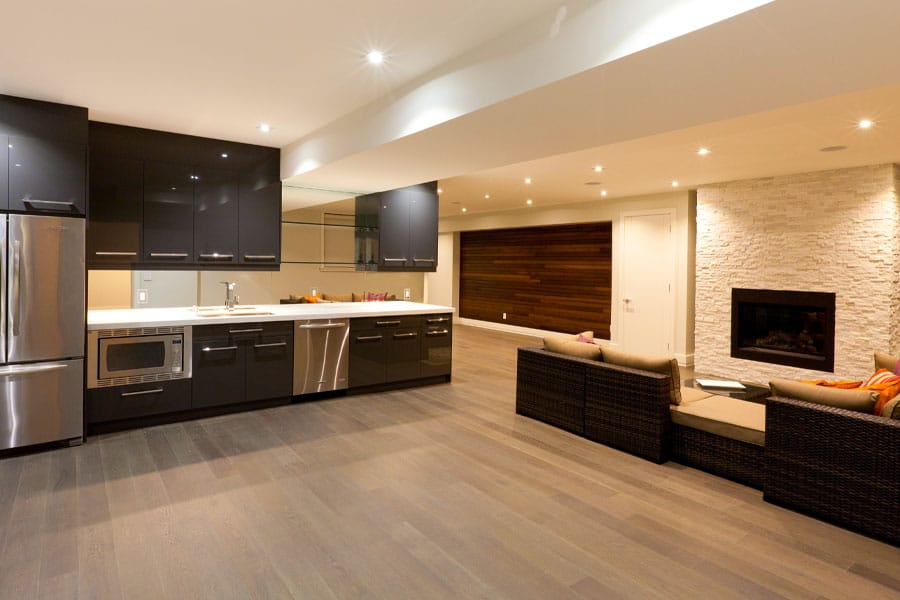What are building materials?
Building materials are materials that are used to construct buildings or structures. Traditional building materials such as clay, natural stones or wood have been used by people for thousands of years. Today, mass raw materials such as sand or lime are also used. These materials can be further processed into building materials such as cement, concrete or glass.
Did you know? Rice soup was one of the basic building materials used for the Great Wall of China. It was added to the mortar and the amylopectin in the rice ensured that the bond between the stones was particularly strong. And the Romans also experimented with different materials. The Colosseum, for example, is still so well preserved because they used a kind of ‘super concrete’.
What building materials are there?
There are organic building materials such as wood and inorganic building materials such as plastics. A distinction is also made between recycled building materials and building materials that do not contain any recycled materials. Let’s take a closer look at some building materials.
1. Concrete
Advantages: good thermal storage capacity and sound insulation; versatile
Disadvantages: high CO2 emissions; exacerbates sand shortage
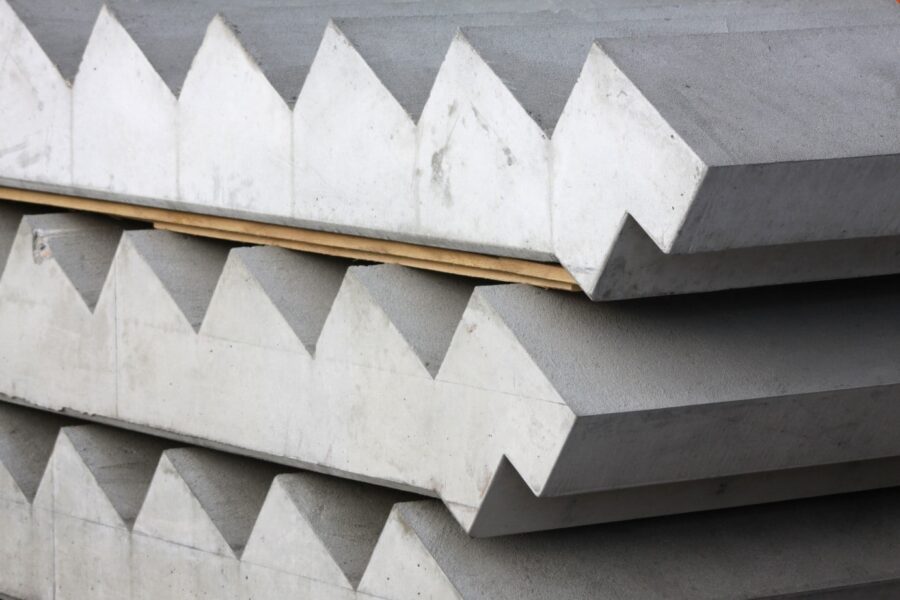
Concrete is one of the oldest building materials. Lime mortar was already being used as a binding agent in Turkey 10,000 years ago. Concrete was subsequently developed further, primarily by the Romans. We now know that the production of concrete emits a lot of CO2 – the climate crisis means that it is considered controversial. In addition, the many different applications of concrete exacerbate sand shortage.
Nevertheless, concrete is one of the most popular building materials due to its versatility. Concrete is used for a wide range of applications – from bridges and tunnels to high-rise buildings – due to its high load capacity. Since concrete is not combustible, the building material also plays an important role in fire protection. Many people also appreciate its good sound insulation properties.
Did you know? Bluebeam Revu offers many practical features when used as software for working with concrete. Read the linked article to find out more.
2. Soil and clay
Advantages: locally available; lower CO2 emissions
Disadvantages: few experts; long drying times
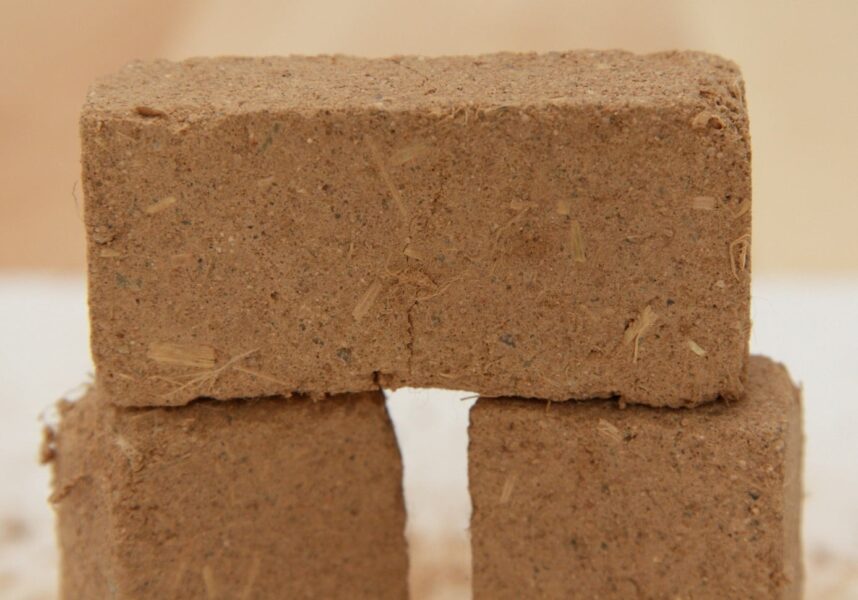
One technique that scientists are researching in order to find an alternative to concrete is using local soil in a 3D printer. If this technology were used on a large scale, the construction industry could drastically reduce its emissions – not only because sourcing soil locally eliminates the need for transport, but also because the huge kiln that is necessary for concrete production is no longer required. One of the challenges facing researchers is finding a solution that is applicable to all soil types. Read our article on building with clay to find out where and how soil is also used in the construction industry.
3. Wood
Advantages: good thermal conductivity; sound insulation; often sustainable, and supports healthy living
Disadvantages: Wood is a natural material and has some natural enemies (e.g.woodworm)
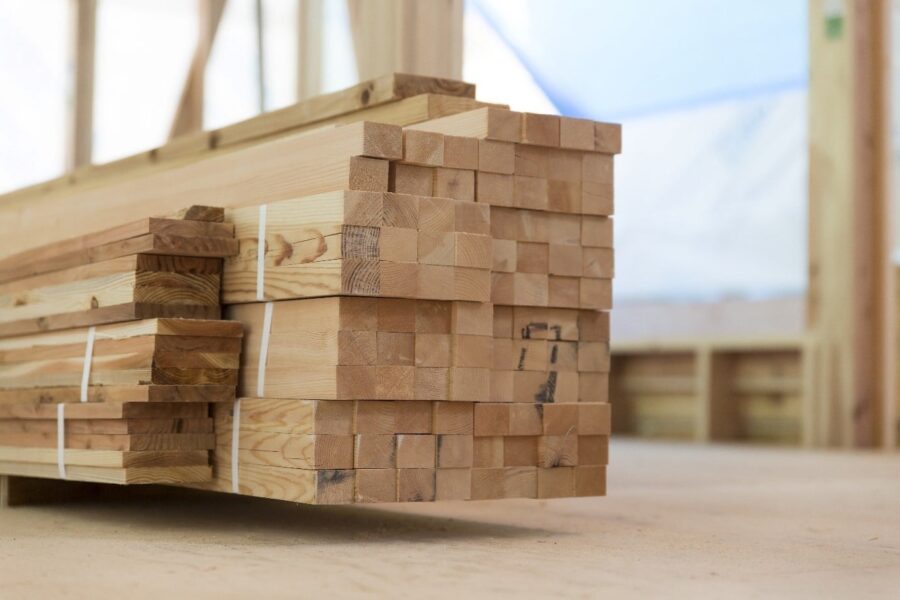
In view of the growing awareness of sustainability, building with wood is in vogue and is another important alternative building material to concrete. Wood stores carbon dioxide and is a renewable raw material; plus, it can be recycled at the end of a building’s lifespan. However, you should be careful about the origin and type of wood used. Tropical timber from faraway countries quickly cancels out the positive carbon footprint, so you should opt for local wood instead and pay attention to seals of approval for sustainable forest management.
Did you know? Researchers are working on exciting projects involving transparent wood and what’s referred to as superwood, which has a higher tensile strength than most metals, despite its lightness.
3. Plastics
Advantages: lightweight; versatile
Disadvantages: mostly based on finite raw materials; no image of sustainability

At first glance, plastics in construction do not seem to be a building material of the future, as plastic does not have the best image (marine pollution is the first thing that springs to mind). Nevertheless, plastics are a valuable building material as they are lighter than metals and can be used in many areas – including for pipes, drainage systems and gutters. Their durability and insulating properties are also a plus – especially from a sustainability point of view. However, it’s important that these plastics are no longer obtained from crude oil and that their recycling properties are improved.
Did you know? One application for recycled plastic is building plastic roads.
3. Aerated concrete
Advantages: good thermal insulation; lightweight material
Disadvantages: low sound insulation; absorbs water
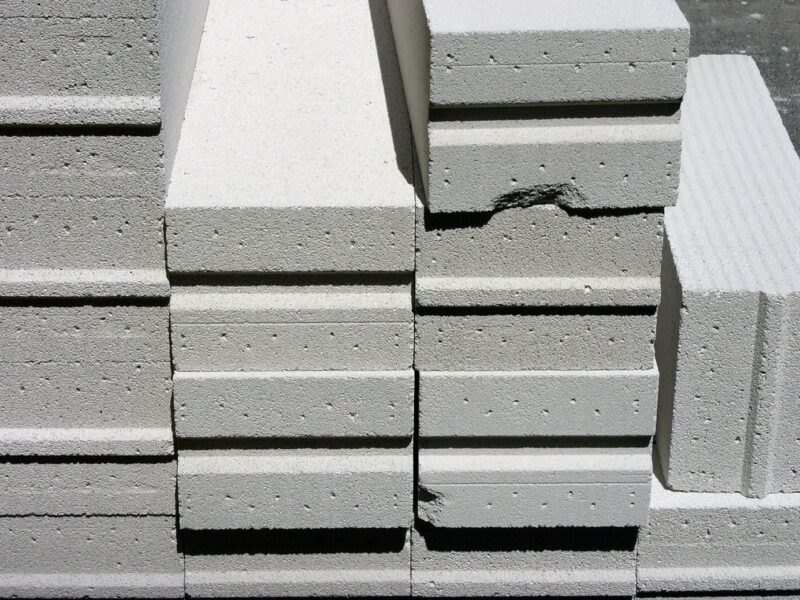
Aerated concrete as a solid building material is used, for example, for bricks or prefabricated components such as wall, roof or ceiling panels. Aerated concrete is used in masonry construction, both indoors and outdoors, where its good thermal insulation properties are advantageous. However, the disadvantages of aerated concrete are that it absorbs water and does not have good sound insulation.
Building materials by use
As explained above, the various building materials have their advantages and disadvantages. That is why different building materials are also used in different areas.
What building materials do you need to build a house?
There’s no one-size-fits-all answer when it comes to which building materials are best suited for building a house. Concrete or bricks are often used for a solid building skeleton that provides good insulation and is fireproof. Solid construction also ensures greater safety in the event of earthquakes. Timber construction is much faster – both when erecting and drying out. The different timber construction methods include stud construction, block and knit construction and timber panel construction.
By the way: If you’re interested in how you can make buildings particularly sustainable, then we recommend our article on the climate-neutral house.
What are solid building materials?
Solid building materials include concrete, aerated concrete, lightweight concrete, clay, lime sand, clinker and cement.Wood can be used in both solid and lightweight construction.
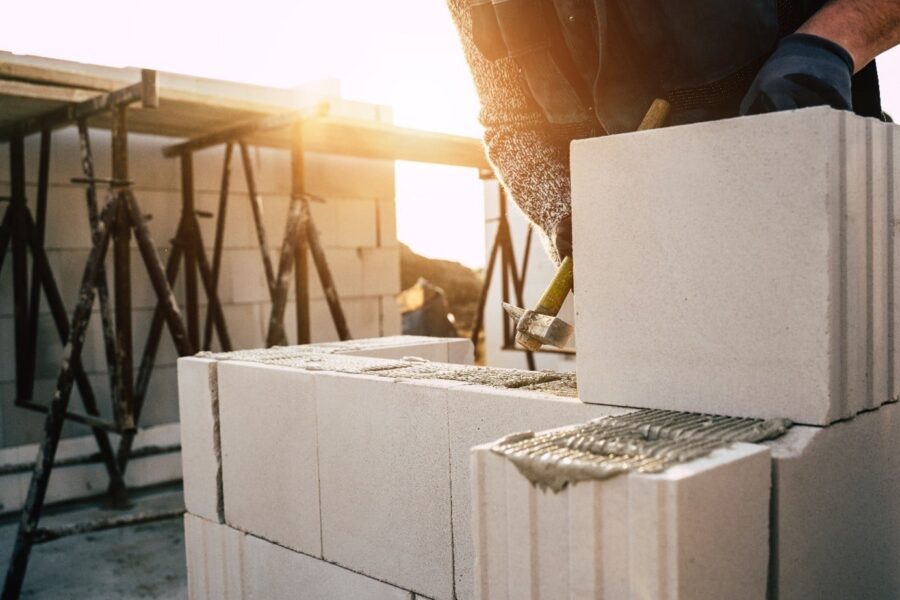
The advantage of solid building materials is that they provide good thermal insulation. During the day, the building materials only heat up slowly, and at night, when it is cooler, they release the heat again immediately. The positive properties of solid building materials also include the fact that they are durable, robust and fireproof.
Which building materials are used for insulation?
Building materials that you can use for heat and/or sound insulation are called insulation materials.Extruded polystyrene is often used for facade insulation, for example, while polyurethane, mineral wools including rock and glass wool, foam glass and wood fibre insulation materials can also be used as building materials.
Which building materials are flame retardant?
The fire behaviour of building materials is assessed in what are referred to as building material classes (also called fuel classes). Building materials in class A1 do not contain any combustible components and include gravel, sand, concrete, steel, cement, glass, building ceramics and clay. The worst category is B3, which covers highly flammable building materials such as straw, paper, cardboard and sheep’s wool.
Which building materials are particularly sustainable?
Sustainable building materials include wood, mud, clay, natural stone, cork and brick. For building materials to be classed as environmentally friendly, they must meet several criteria:
- They must be recyclable – plus, it is important that they have not been treated with harmful substances.
- They should be sourced locally in order to reduce emissions from transport.
- They should consist of renewable raw materials.
- They should have a long service life.

You can find out more about the sustainability of building materials in our guides ‘Cradle-to-Cradle in Construction‘ and ‘Sustainable Construction’.
What else you should know about building materials
Let’s move on from choosing the right building materials to using them in practice. We explain what you should keep in mind in real life when it comes to building materials.
What’s the correct way to calculate the amount of building materials?
Calculating quantity surveys correctly from the start not only protects your wallet but often the environment as well. Digital solutions such as the Bluebeam Revu construction software are helpful here. You can find out how quantity surveys work using the tool here:
- ‘How can companies specialising in shell construction make the most of Bluebeam Revu?‘
- ‘Top 5 reasons to use the volume link in Revu‘
- ‘How to make estimates in Revu‘
- ‘Quantity surveys are the best kept secret in Bluebeam Revu‘
What is the best way to manage building materials?
The best way is to write down which building materials were delivered when and in what quantities, as part of the construction documentation. You should also record the specific type name and batch. In cases of doubt, this helps with complaints or the punch process in the event of a claim – especially if the building materials are no longer visible later.
Our tip: Use apps for site managers to keep track of the construction site and the building materials used.
Which building materials will determine the future?
We believe that the building materials of the future will be sustainable. Many researchers are working on developing low-CO2 building materials that meet requirements in terms of function, costs and handling. Technologies such as 3D printing in construction are also playing an increasingly important role here.
Predictions for building materials 2022
In order to be able to predict the future of the construction industry, it is essential to take a look at building materials as well as their prices and availability. Here’s a quick look at the most important things.
How long will the supply bottlenecks for building materials persist?
Supply bottlenecks for building materials have existed since the start of the pandemic in 2020 and are repeatedly exacerbated by many different crises. The current forecast (as at April 2022) is that building materials will remain scarce in 2022. Find out more about this by reading our article on the shortage of building materials.
When will building materials become cheaper again?
Along with delivery difficulties and inflation, prices for building materials have risen rapidly in some cases. There is no sign of this easing in 2022 (as at April 2022). Find out more about price trends for building materials by reading this linked article.
Conclusion: Sustainability and crises set the parameters for the building materials trade
Delivery difficulties and skyrocketing prices for building materials have proved challenging recently for building materials retailers in Germany and around the world. But as for building materials, there are also positive trends: sustainability, as one of the trends in the construction industry, is becoming increasingly important when it comes to building materials. While concrete is increasingly criticised due to its high CO2 emissions, natural building materials such as wood or clay are becoming increasingly popular. At the same time, many scientists are researching innovative materials. We are looking forward to future developments.
What Is Embodied Carbon in Construction and How Can It Be Reduced?
Photo credit: Cover image © Adobe Stock/Flamingo Images, image 1 © Adobe Stock/anderssehen, image 2 © Adobe Stock/Erik Schumann, image 3 © Adobe Stock/OKA, image 4 © Adobe Stock/Satoshi, image 5 © Adobe Stock/Martin Debus, image 6 © Adobe Stock/Alex G, image 7 © Adobe Stock/Tomasz Zajda










